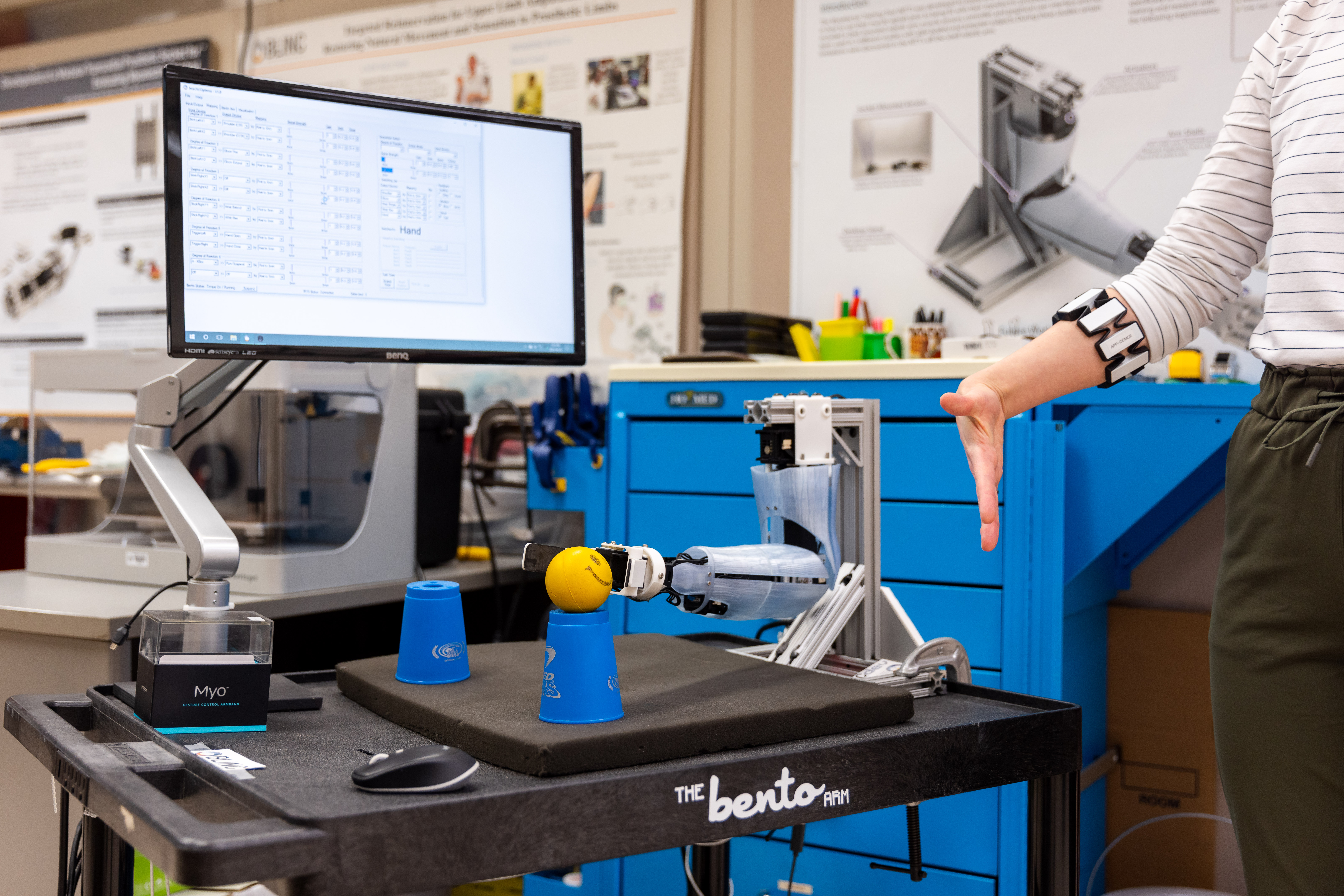Bionics

Bionics is committed to advancing healthcare systems and technologies through collaborative innovation.
Our research covers a broad range, from understanding nervous system complexities to creating advanced implantable and wearable medical devices. Specializing in cutting-edge bionic technologies like exoskeletons, artificial limbs, and neural prostheses, we incorporate virtual and augmented reality to enhance their functionality. Collaborating across disciplines such as biomedical engineering, medicine, rehabilitation, neuroscience, and computing science, we drive diverse research initiatives in healthcare robotics, including surgical robotics, and bionics. Ultimately, our goal is to improve patient outcomes and quality of life through innovative advancements in both science and healthcare practices.
Careers
- Rehabilitation engineer
- Robotics engineer
- Control systems engineer
- Human-Computer Interaction (HCI) specialist
- Machine learning engineer
Area of specialization
Neural and Rehabilitation Engineering
Neural and rehabilitation engineering focuses on developing technologies to understand and interact with the nervous system, aiming to restore function and improve quality of life for individuals with neurological impairments. This includes research on neural prostheses, brain-computer interfaces, and rehabilitation robotics to aid recovery from neurological injuries.
BioRobotics
BioRobotics encompasses the design and application of robotic systems to enhance medical treatments and patient care. This includes rehabilitation robotics and assistive technologies, which improve mobility, manipulation ability, and independence for individuals with disabilities, as well as surgical and therapeutic robotics, which play a crucial role in enhancing precision, reducing invasiveness, and improving outcomes in surgical interventions.
Wearable Biomedical Systems
Wearable Biomedical Systems involve the development of wearable sensors and devices that monitor health, prevent injuries, and assist with medical conditions. This includes technologies like exoskeletons, which enhance mobility and strength, and neuro-prosthetic systems, which replace or enhance neural functions to improve patient outcomes.